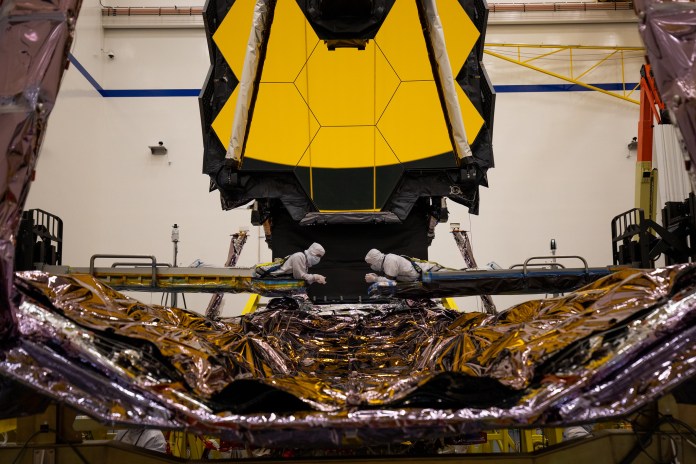We’ll have to wait a bit longer still to see NASA’s next big space telescope get off the ground.
The much-delayed $9.8 billion James Webb Space Telescope won’t launch in March 2021 as previously planned, NASA officials confirmed yesterday (June 10).
Webb “absolutely will not launch in March,” Thomas Zurbuchen, associate administrator of NASA’s Science Mission Directorate, said in a presentation yesterday during the 2020 joint spring meeting of the Space Studies Board and Aeronautics and Space Engineering Board, both of which are part of the U.S. National Academies of Sciences, Engineering and Medicine. “That is not in the cards right now.”
Progress on the Webb telescope was proceeding nicely until the coronavirus pandemic hit early this year, Zurbuchen said. Many NASA centers switched to mandatory telework to combat the virus’ spread, significantly slowing the development of numerous missions, including Webb.
“We’ve lost time,” Zurbuchen said. “Not everyone was available; we had positive cases here and there.”
NASA has not yet come up with a new target date for Webb’s launch; that will likely be decided during a schedule assessment next month, Zurbuchen said. But he’s confident the liftoff will occur sometime next year.
“I’m very optimistic of this thing getting off the launch pad in ’21,” Zurbuchen said.
The delay is not exactly shocking. A report from the Government Accountability Office published in January of this year suggested that Webb had just a 12% chance of being ready for a March 2021 launch, even without the coronavirus pandemic.
And the mission has suffered numerous delays and cost overruns over the years. Since 2009, for example, the observatory’s targeted launch date has been pushed back by almost seven years, and its price tag has nearly doubled.
But the science Webb will do once aloft will make all the trouble and effort worthwhile, NASA officials have stressed. The new observatory, billed as the successor to the iconic Hubble Space Telescope, will allow astronomers to study the universe’s first stars and galaxies and hunt for signs of life in the atmospheres of nearby alien planets, among other tasks.
Webb is optimized to view the cosmos in infrared light. The observatory will launch atop an Ariane 5 rocket from French Guiana, then make its way out to the sun-Earth Lagrange Point 2, a gravitationally stable point in space about 930,000 miles (1.5 million kilometers) from Earth.
– Advertisement –
